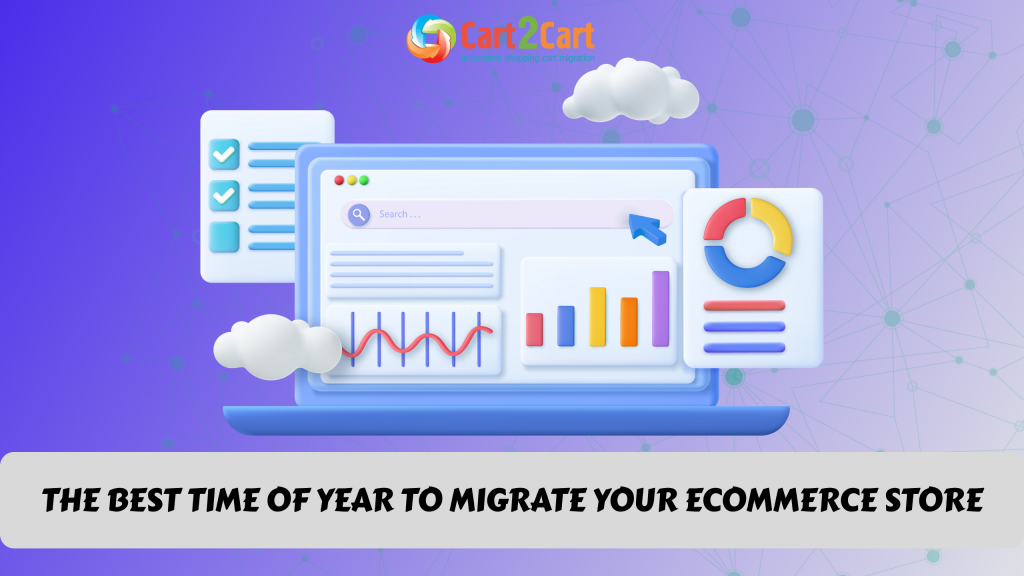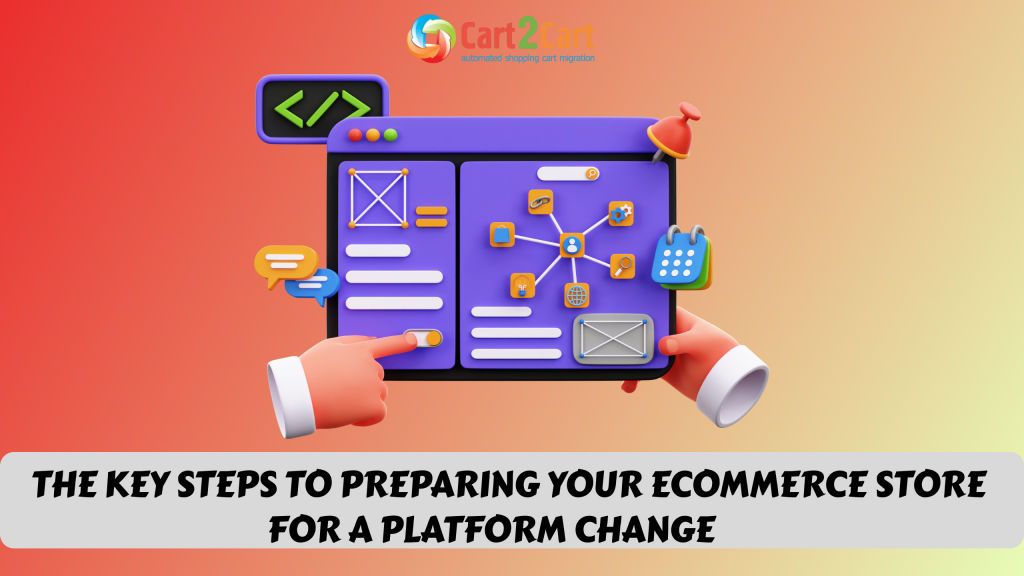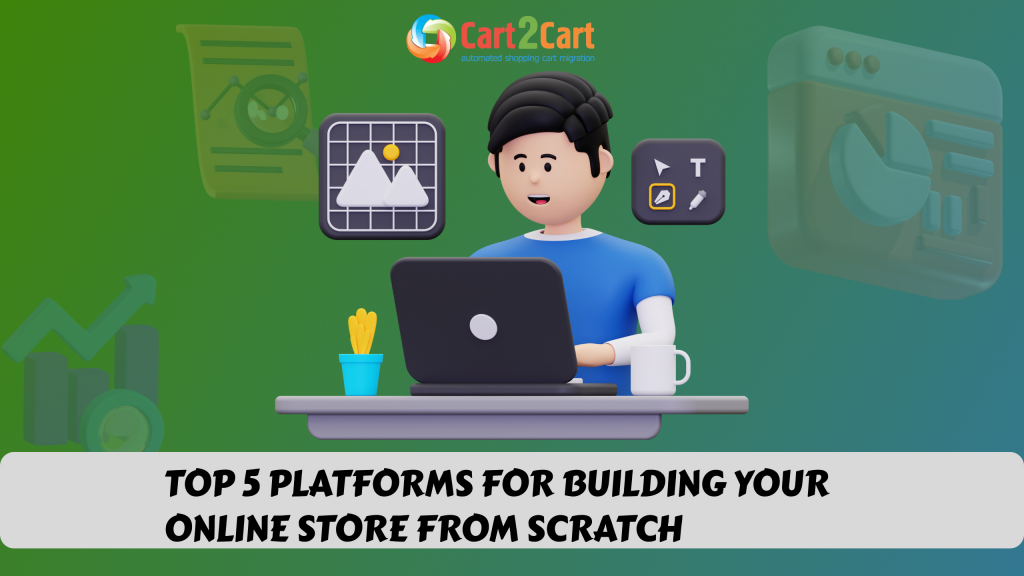
Migrating your eCommerce store to a new platform can be a challenging but rewarding experience. Whether you're moving from WooCommerce to Shopify, Magento to BigCommerce, or any other platform, the migration process presents a prime opportunity to rethink and redesign your online store.
Instead of simply transferring your old store as-is, using the migration process as a chance to refresh your design can help you enhance the user experience, improve conversion rates, and align your store with current trends and technological advancements.
In this article, we will explore how you can use migration as an opportunity to redesign your store, along with the best practices and considerations for achieving a modern, functional, and visually appealing online shopping experience.
Why Use Migration as an Opportunity for Redesign?
When migrating your eCommerce store, the focus is often on ensuring that product data, customer information, and orders are transferred correctly. However, this is the perfect time to think about more than just the technical aspects. Here are some key reasons why redesigning your store during migration can benefit your business:
- Improve User Experience (UX): User experience is crucial to the success of any eCommerce store. A store redesign allows you to focus on aspects such as navigation, product discovery, and mobile responsiveness to ensure your customers can easily find what they need and complete purchases without hassle.
- Update to a Modern Design: Trends in eCommerce design change rapidly. What looked good a few years ago might now feel outdated. Migration gives you the chance to update your store’s visual design with the latest design trends and functionalities, such as clean layouts, bold typography, and advanced animations.
- Optimize for Mobile: As mobile commerce continues to grow, it’s essential to ensure your online store is fully optimized for mobile devices. A redesign can help you create a responsive store that delivers a seamless shopping experience across all devices, from smartphones to tablets.
- Improve Site Speed and Performance: A faster website leads to better user experiences, higher conversion rates, and improved SEO rankings. Migrating your store gives you the opportunity to optimize site speed and performance by adopting better hosting, improving image compression, and using a streamlined theme.
- Leverage New Features and Tools: New platforms often come with advanced tools and features that weren’t available on your previous platform. Whether it’s integrated analytics, automation, enhanced payment gateways, or better marketing capabilities, redesigning your store allows you to take full advantage of the platform’s new features.
- Brand Alignment: A store redesign ensures that your eCommerce site reflects your brand’s values, voice, and mission. Migration can be an opportunity to revisit your brand’s messaging and visual identity, making sure your online store aligns with your overall marketing strategy.
Ready to Migrate Your Store Without the Hassle?
Make your eCommerce migration smooth and stress-free with Cart2Cart! Transfer your products, customers, and orders automatically—no downtime, no data loss. Use this migration as the perfect opportunity to redesign your store and enhance the shopping experience!
TRY IT FREE
Steps to Redesign Your Store During Migration
Now that you understand the benefits of using migration as an opportunity for a redesign, let’s walk through the steps you should take to ensure that your migration and redesign are successful.
Assess Your Current Store Design
Before jumping into the redesign, take a step back and evaluate your current store. What’s working, and what isn’t? Identify the pain points and challenges your customers face when browsing your store. For example, are your product categories easy to navigate? Is the checkout process intuitive? Do your product pages showcase your items effectively?
Look at your analytics to understand how customers are interacting with your store. Are they abandoning their carts during checkout? Are they bouncing from specific pages? Answering these questions will give you insight into what needs to be improved during the redesign.
Set Clear Goals for Your Redesign
Before you begin the design process, establish clear goals for your store’s redesign. Some common objectives might include:
- Increased Conversion Rates: Improving the layout and functionality to make it easier for customers to complete a purchase.
- Improved User Experience: Making it easier for customers to find products, navigate your store, and complete their transactions.
- Enhanced Mobile Responsiveness: Ensuring that your site functions flawlessly on mobile devices.
- Better Branding: Updating the design to reflect a more polished or modern brand identity.
By defining your goals early, you’ll be able to prioritize the aspects of your design that will have the greatest impact on your business.
Choose the Right Platform for Your Needs
The migration process offers a perfect opportunity to evaluate if your current platform is the right one for your business needs. Each eCommerce platform comes with its own set of features, design flexibility, and capabilities. Take the time to research and select the best platform for your store’s unique requirements.
If you're migrating to a platform like Shopify or BigCommerce, you can take advantage of their user-friendly design templates, apps, and integrations, which can streamline the redesign process. On the other hand, if you’re moving to a platform like WooCommerce or Magento, you may have more flexibility but will require more technical expertise to implement a custom design.
Create a Wireframe or Mockup
Once you’ve set your goals, start sketching out how you want your new store to look. You don’t have to be a professional designer to create a basic wireframe or mockup. Tools like Sketch, Adobe XD, or Figma allow you to create detailed wireframes to visualize how the homepage, product pages, and other key sections will be laid out.
Consider the following elements when designing your store:
- Navigation: Ensure that your store’s navigation is intuitive and easy to use. Customers should be able to quickly find what they’re looking for.
- Product Pages: Focus on high-quality product images, clear descriptions, and useful information such as reviews, shipping details, and size guides.
- Checkout Process: Simplify the checkout process to minimize friction and reduce cart abandonment. Use fewer steps, offer guest checkout options, and include multiple payment gateways.
- Call to Action (CTA): Use clear and compelling CTAs to encourage customers to take action. Place buttons like “Add to Cart” or “Buy Now” in prominent locations.
Choose a Theme or Template
Most eCommerce platforms offer pre-designed themes or templates that you can use as a starting point for your redesign. While you can customize these templates, it’s important to select one that aligns with your goals and the overall aesthetic of your store. Many themes are optimized for mobile and come with built-in features to improve site performance, so choose wisely.
When selecting a theme, look for one that:
- Is mobile-friendly and responsive
- Has fast loading times
- Offers customization options to match your branding
- Includes the functionality you need (e.g., product filtering, wishlist, social media integration)
Optimize for Performance
Site speed is a critical factor in both user experience and SEO rankings. When redesigning your store, make sure you’re optimizing it for speed. Some things you can do include:
- Compressing images to reduce load times
- Minifying CSS, JavaScript, and HTML files
- Using a Content Delivery Network (CDN) to distribute content across the globe
- Choosing a fast, reliable hosting provider
Test and Launch
Before going live with your redesigned store, make sure to test everything thoroughly. Test all functionalities, including the search bar, filters, product pages, and checkout process, on both desktop and mobile devices.
Ensure that your site loads quickly and that all content is correctly displayed. Perform user testing by asking colleagues or customers to browse your site and provide feedback on the overall experience.
Once you’ve tested your store, you’re ready to launch! Announce the redesign to your customers and invite them to check out the new features and improvements. Offering special promotions or discounts during the launch can encourage visitors to make a purchase.
Conclusion
Migrating your eCommerce store is more than just a technical process—it’s an opportunity to refresh, optimize, and redesign your store for better performance, user experience, and brand alignment. By following the steps outlined above, you can use the migration process to create a store that not only works more efficiently but also delivers a better shopping experience to your customers.
At Cart2Cart, we make the migration process easier, allowing you to transfer your store data seamlessly and focus on what really matters—building a better online shopping experience. Take advantage of this chance to redesign your store, and let Cart2Cart help you get there with minimal hassle and maximum impact. Start your migration today!


 March 31, 2025
March 31, 2025 


